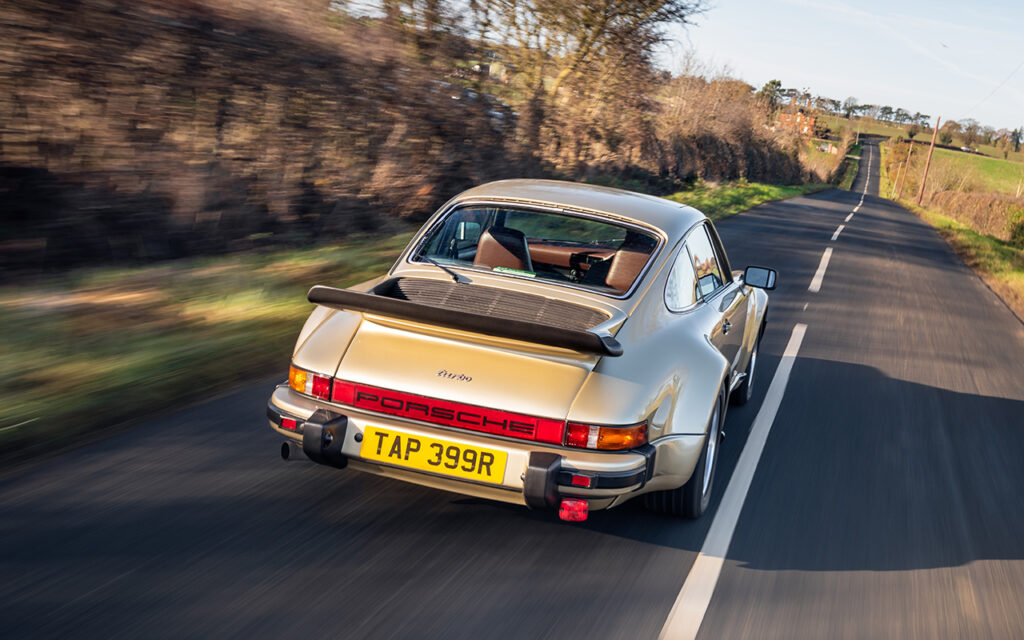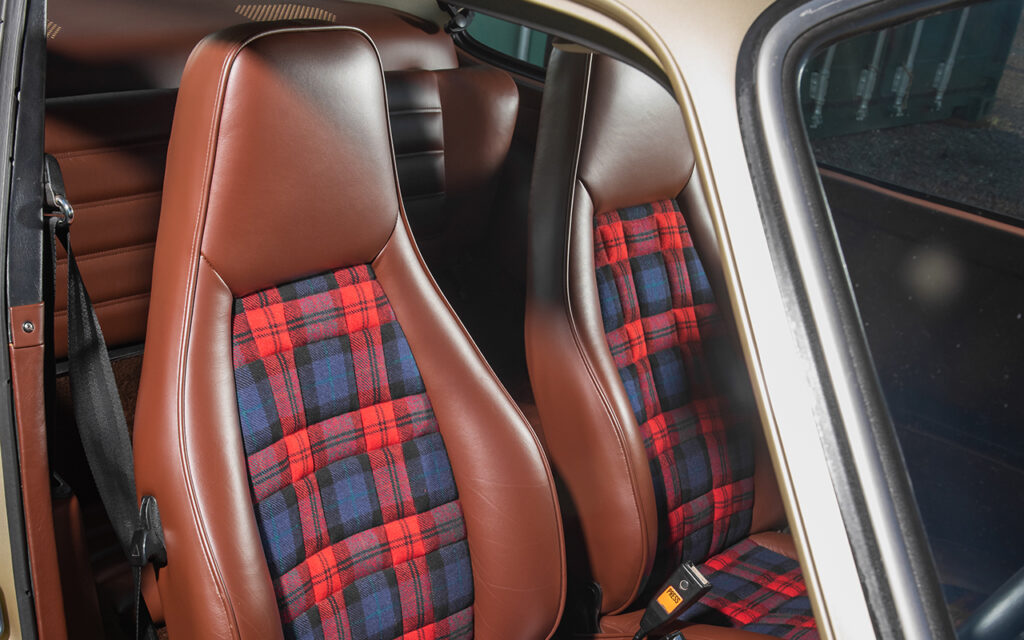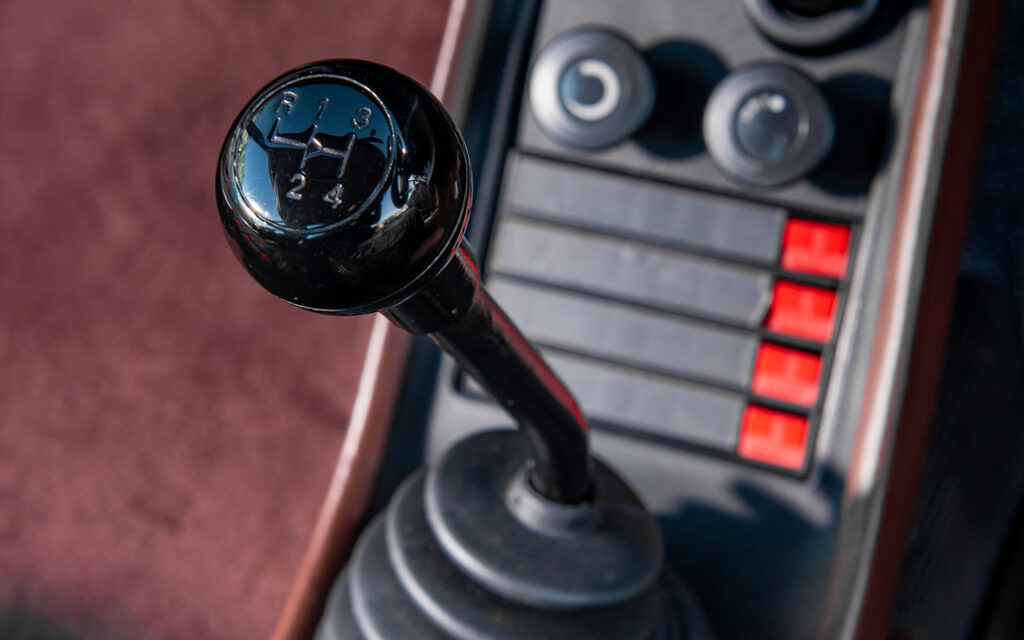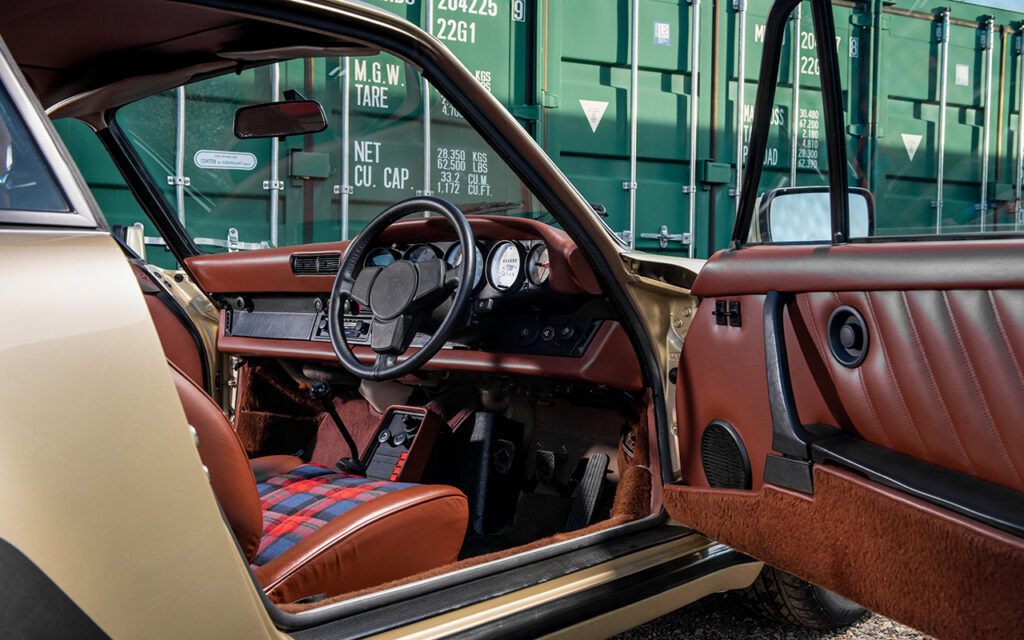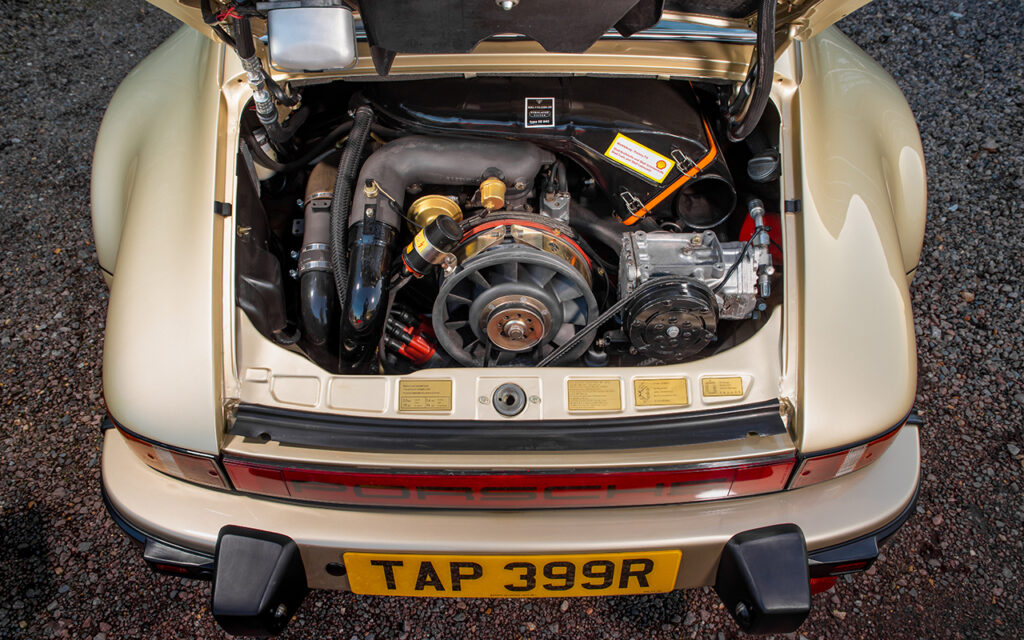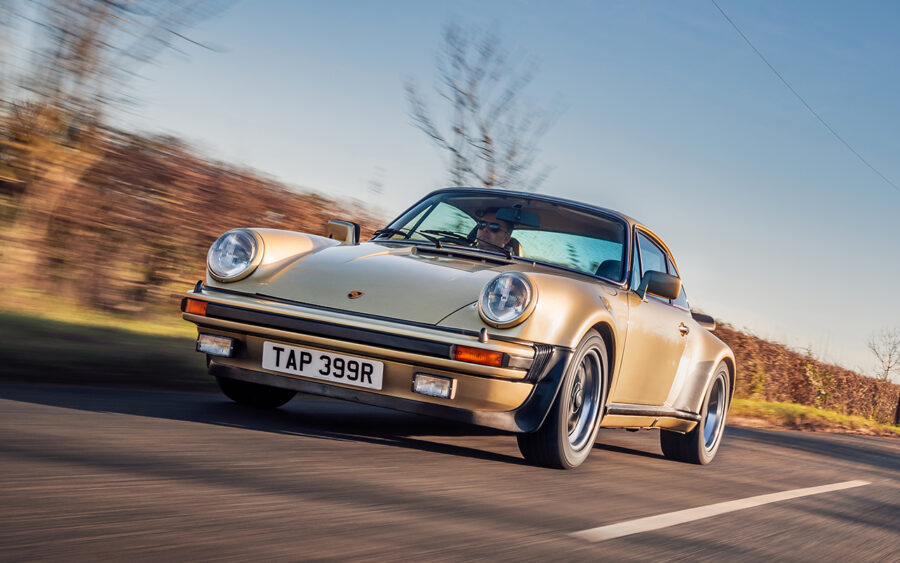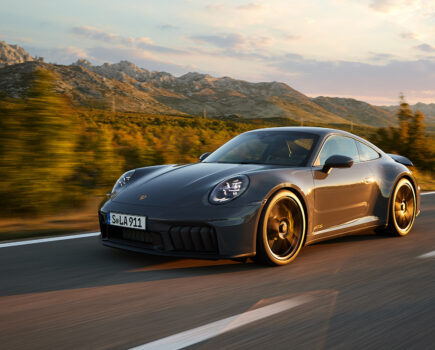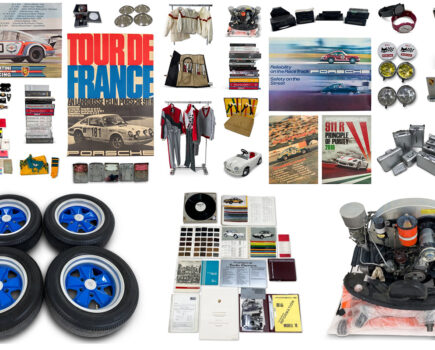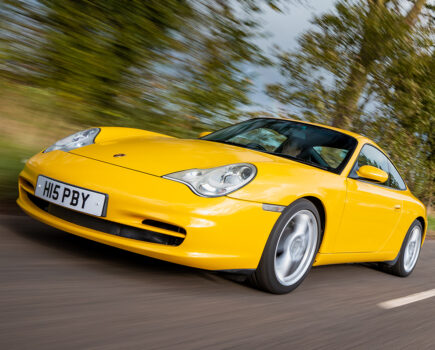The iconic 930 has become something of a legend in the automotive world. But does the 911 Turbo really deserve its ‘widow-maker’ status?
Words: Johnny Tipler Images: Dan Sherwood
The aura surrounding early 911 Turbos from the mid-1970s glows with age: as that halcyon decade recedes further into history and we reach for tangible objects that encapsulate the era, few cars carry the flame as radiantly as the 930. I’m with Mick Pacey of Export 56 at his Cranfield base in rural Bedfordshire, contemplating one of a trio of three-litre 930s.
Mick has owned Porsches since 1978 and takes care of close to fifty Stuttgart-crested classics at Export 56’s headquarters. “I’ve always had a soft spot for three-litre Turbos,” he says. “They’re incredibly interesting, and what’s crucial is knowing the difference between the rarity of the 930 3.0 and the comparatively mass produced 3.3, as well as how few right-hand drive three-litre cars were assembled — Porsche built 2,500 3.0s, and probably no more than a hundred or so right-hookers between 1975 and 1977.”
Our featured Platinum Blonde 930 is a matching-numbers three-litre model (chassis 930 770 0180, to be exact), first registered on 7th January 1977 and offered by AFN Porsche Isleworth in Platinum Metallic with dark brown leather upholstery and McLachlan tartan inserts. It’s one of just thirty-six three-litre 930s imported into Britain by AFN during the aforementioned three-year timeline. Factory options for this particular Turbo include bumper shocks, Bamberg radio with Dictaphone, air-conditioning and an electric sunroof.
The car is utterly immaculate, and that’s because it has recently emerged from a comprehensive three-year restoration carried out by Phil Hindley at marque specialist, Tech9 Motorsport, based at Hale, near Liverpool. Ahead of the restoration, TAP 399R was still original, though showing isolated rust spots and paintwork blemishes. It was stripped back to bare metal, with the shell jigged and renovated by the team at Road and Race Restorations of Hulton, Manchester, employing as many original parts as possible. The car retains its original ‘teddy bear’ long pile carpets, while its exterior window trims project sun-faded black anodising.
As you would expect from Tech9, the original flat-six was fully rebuilt to exact tolerances, finished with vapour-blasting and chromium-plating of magnesium parts. The exhaust manifolding was ceramic coated for a pleasing cosmetic (as well as durable) finish, incorporating the rebuilt original KKK 3LDZ turbocharger. The gearbox retains its factory limited-slip differential, as well as its now rebuilt original four-speed ZF 930/30 transmission.
The suspension received a workover — another Tech9 speciality — including rebuilt Bilstein dampers, new rear arms and restored aluminium front brake calipers. The original sixteen-inch Fuchs alloys were given the correct anodised look and were shod with Michelin Pilot SX MXX3 tyres. Tech9’s restoration was fully documented and is presented in a beautiful hardback book, along with extensive paperwork, including all bills for the work carried out. Export 56’s asking price is £225,000, and to put that in context, these models have sold for in excess of £400,000.
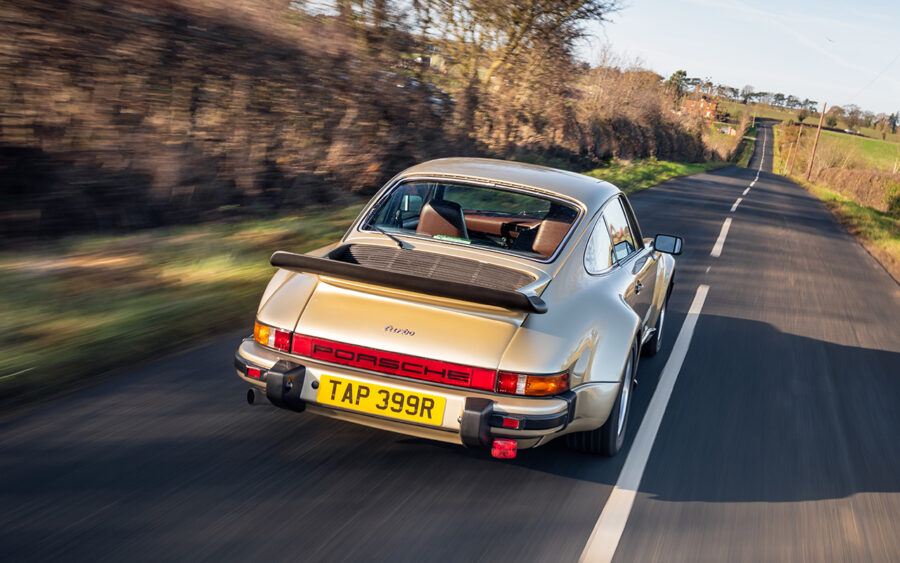
The 930 was originally called the 911 Turbo, although the internal factory design code number was the designation that eventually stuck, certainly as far as the cognoscenti were concerned. The 930 started off as a design study unveiled at the Paris Salon in 1973, though it was a short hop from competition-focused 911 RSR to 930 road-burner. Porsche’s marketing department wanted the new 911 Turbo to be a bare-bones lightweight, a successor to the RS models, and that’s in effect what the 934 motorsport machine was. There was even a scheme to build a limited run of five-hundred homologation specials. Porsche management, led by Dr Ernst Fuhrmann, had other ideas, deciding the 930 should be the 911 flagship. It was kitted out accordingly.
The 911 Turbo was launched in autumn 1974, when the West was hamstrung by a Middle Eastern oil crisis, manifest in speed limits, a three-day-week and fuel rationing. Nevertheless, the 911 Turbo attracted buyers who weren’t bothered by such inconveniences, each car heading to market as the epitome of well-equipped, range-topping luxury. The public reaction was just as Porsche had hoped: a practical supercar that could be used every day, with bulletproof reliability, and that included trans-continental runs at high speed, capable of seeing off any challenge. The 930 was the perfect all-rounder, which is what we have here.
In Porsche design chronology, the 930 was an early example of the impact-bumper 911 shell, developed in response to US-driven safety legislation. This makes it an H-programme model, in production for the 1975 model year, manufactured with zinc-galvanised panels and offered with a six-year anti-corrosion warranty.
The most obvious aspect of the 930’s stance was the swollen wheel arch in each corner, and, at 1,829mm, wider than the standard 911 (1,610mm) by 219mm, to accommodate fifteen-inch staggered Fuchs five-spokes. All brightwork was eschewed in favour of black, applied to window surrounds and door handles, with black stone-guard decals applied on the forward-facing facets of the rear arches. Headlamp bezels were colour-coded to the body.
The engine lid bore the ‘whale tail’ spoiler, a reference to the shape of, er, a whale’s tail. The ‘tea tray’ rear wing would come later, in 1978 for the 3.3-litre 930, when the 911 Turbo incorporated a new intercooler, lacking on the launch model. Extravagant at the time — certainly by roadgoing standards — the whale tail was a hallmark of the quest for aerodynamic downforce, still in its infancy, and, like the 930’s turbocharger, a direct example of gains made on the racetrack being directly applied to a road-going Porsche. Pioneering technology, in other words. Similarly, the front valance incorporated a deeper, wider spoiler. The downside of this was that the extra width created greater wind resistance compared with the narrow bodied 911s — borne out by Alois Ruf Jr’s legendary CTR ‘Yellowbird’, which is essentially a turbocharged narrow-bodied 911.
Here’s how the 930 tech spec evolved. At launch, the 911 Turbo was fitted with the 2,992cc flat-six engine with the internal code 930/50, developing 260bhp. Its cast aluminium crankcase contained Nikasil cylinders and stronger forged pistons, with bore and stroke measuring 95×70.4mm. Compression ratio was a low, turbo-friendly 6.5:1, and fuelling was delivered by the Bosch K-Jetronic injection system. Compared with what would come later, the early 911 Turbo installation was relatively simple: the KKK-3LDZ turbocharger was located below the engine bay, mounted between the heat exchangers and final silencer. At the left of the engine compartment was the large charge-air feed-duct, with wastegate below, and the adjacent and similarly large duct carried the boosted charge from the turbo.
In 1976, a bypass valve in the inlet system helped smooth out the transition between off- and on-boost, manifest in the notorious turbo lag that — as we’ll see when I get this car onto the road — is what defined the power delivery of the early 930. Nevertheless, it was quicker from 0-60mph than the Carrera RS 2.7 (6.1 seconds as opposed to 6.3), with 153mph a far higher top speed than the Carrera RS’s 140mph.
For most of its life, the 930’s transmission consisted of a four-speed ZF gearbox designed for the 911 Turbo, based on the enduring 915 gearbox, though considerably sturdier in a cast aluminium case rather than magnesium. It could cope with 442Nm of torque, which was a safe margin, given the 930’s considerable 343Nm torque output in 1975. The single-plate clutch diameter was increased from 225mm to 240mm, with cast-iron pressure plate and housing for greater strength. Why didn’t Porsche introduce five gears to the transmission from the off? Concerns that the five-speed 915 ’box might not be strong enough to cope with turbo twist? Perhaps, but bear in mind many cars were still four-speeders in 1974, and even though Porsche had been offering perfectly fine five-speed shifts since the 1960s, there was still the notion that four gears was quite sufficient, especially given the torque available from the turbocharged engine.
The 930’s suspension was derived from the racing RSR 3.0, though it wasn’t different from conventional 911 practice, featuring longitudinal torsion bars at the front and transverse torsion bars at the rear, with anti-roll bars fitted at both ends. Sand-cast aluminium rear trailing arms were designed to reduce squat under acceleration, and while increased camber and reduced caster at the nose made the steering heavier, a cast-aluminium cross-member incorporated anti-dive geometry. As for brakes, the first three-litre 911 Turbos employed the same braking equipment as the standard Carrera, but the later 3.3-litre 930 benefited from stoppers derived from Porsche’s 917 race car.
The 930’s cabin was considered relatively luxurious in its day. Early cars like this one featured leather seats with tartan inserts, while later pews were entirely leather. In typical 911 fashion, the dominant dial in the instrument binnacle was the 7,000rpm rev counter, redlined at 6,750rpm. Inset in the lower part of the tachometer was a small gauge that measured turbo boost. This was an important monitoring device aboard a racing Turbo, but in the road car it was, possibly, of little interest to (or comprehended by) its owner. Nevertheless, it was a clear nod to the 930’s racing heritage, placing the model a cut above its normally aspirated siblings.
The speedo maxed out at 150mph in some markets and 180mph in others, while the rest of the gauges were identical to those fitted in existing 911s. The odometer in Export 56’s car reads 99,397. Of course, we relish the opportunity to add to that figure, gripping the three-spoke steering wheel contemporary with the rest of the 911 line-up. The part switched to a parallel four-spoke design (as per the Carrera 3.2) in 1984.

Porsche 930 Turbo: on the road
From my selected driving position, there’s quite a long reach over and up to engage first gear. Easy does it. There’s an invigorating surge forward from standstill, and once I’m done with first, I find that second, third and fourth are close together in the gate, though widely spaced in respect of revs, but not lacking in torque. It’s a rugged ride — a bump rumble — and I’m feeling all the ripples of the rural road. I’m cruising at near 50mph. A gap opens up ahead of me in the desultory traffic, I drop a cog to third and press the throttle. Nothing. Then, after three or four seconds, it erupts. The turbo kicks in at 3,000rpm, there’s a gnarly snarl, and all of a sudden, I’m a passenger as Blondie hurls herself down the road. The exhaust soundtrack is less impressive than a normally aspirated 911 thanks to the muffling turbo apparatus, but on a sensory level, it’s the physical rather than the aural that impresses.
On this main road, I’m soon back to cruising along at 60mph in fourth at 2,000rpm — it’s a very languid relationship between engine and transmission. Thus far, I’ve been going along at a steady 50-60mph in traffic with the engine barely ticking over at 1,500rpm, which is economical, if unexciting. When an overtake presents itself, however, at 4,000rpm in third, this car is a ball of blistering rage. Eventually. And in a real overtaking situation (as opposed to just playing about to see what happens), there’s a hurry-up call, my foot’s hard down and the revs are up to 6,500rpm. The boost gauge needle is off the dial at 1.0bar, and a good three to four seconds elapse before I’m flung towards the horizon. Sadly, it comes up all too soon; the straight has evaporated, the moment is over, and we’re back to a pootle again.
This lack of spontaneity makes the turbo assist more of a novelty than a practical aid to performance. I don’t want to go on making excuses for this car, because in every other respect it’s a fantastic example of an early three-litre Turbo, but back when it was current, there wasn’t the volume of traffic, and fast moves could be contemplated with less pressure and “can we or can’t we” urgency. Brakes are firm, but there’s not much feedback — I can feel the car is slowing down, and they do require firm pressure, but they’re not that sharp.
There’s a strong temptation to bimble along in third on B-roads because I’ve got better control of this Porsche, just as you might go along in fifth in a modern six-speed car. Long, undulating straights with concealed dips and swoops culminate in curves and corners offering all manner of camber changes — it’s an entertaining and attention-demanding run. I’m calling lift-off oversteer into play, easing my right foot on turn-in so the nose tucks into the apex, and out again as I apply the throttle once more. But as I gather pace, what this car seemed to lack in purposefulness on a cluttered A-road changes markedly on a sweeping B-road as I swish along the hillside.
Now the suspension really is working well, banishing indifferent A-road behaviour and, pleasingly, turn-in is rather lovely, projecting a character all of its own leaning through curves. I’m mostly using second and third gears and relatively low revs, between 2,000rpm and 4,000rpm. That’s the turbo torque factor playing its hand. On the open road it’s certainly a joy to swing around the bends, but on a sharper corner there is quite a noticeable weight transference.
Flinging it this way and that through these wonderfully undulating bends, snaking between the high hedges; this is where this car definitely comes into its own. It’s demanding because I’m having to constantly monitor what it’s doing, meaning my input into the steering and throttle is intuitive. I don’t think about it, it’s just what happens. I barely get into fourth gear at all on this section, and I’m reaching quite high revs on the short straights. As I thrust ever more swiftly around the twists and turns of these rural Bedfordshire back lanes, this special 911 steadfastly retains its dignity, keeping itself just beyond the reach of my wilful overconfidence.
Of course, the 930 predates modern traction aids, including ABS, meaning braking requires firm pressure and changing gear is a relatively slow and methodical process. The crucial thing here, however, is that I can see through most of the bends I’m presented with, allowing me to straight-line when I can tell there’s nothing coming in the opposite direction. If there is, I’ve got space to duck back in. Traffic is scarce, so I’m having a nice clear run.
How relevant is four-decade-plus turbocharged performance today? Like any vintage Porsche, this car more than holds its own in the performance stakes. Not much can live with a 930 at full chat, especially if we’re talking sheer spectacle, though the driver needs to know what he or she is up to. Sure, it’s not the old-time supercar performance that lingers on, so much as imagery and character, but this car has lost none of the essence of the heroic beast that it exemplified all those years ago. The 930 is unfailingly street-smart, crowd-bewitching, decidedly macho in the way it looks and the way it behaves when pushed. In my ideal world, it just needs to sound a bit more butch.
From what Mick Pacey tells me, I gather he’s already found a buyer — this stunning Porsche is likely to be relocating to Australia, where they mine platinum – and indeed gold.

